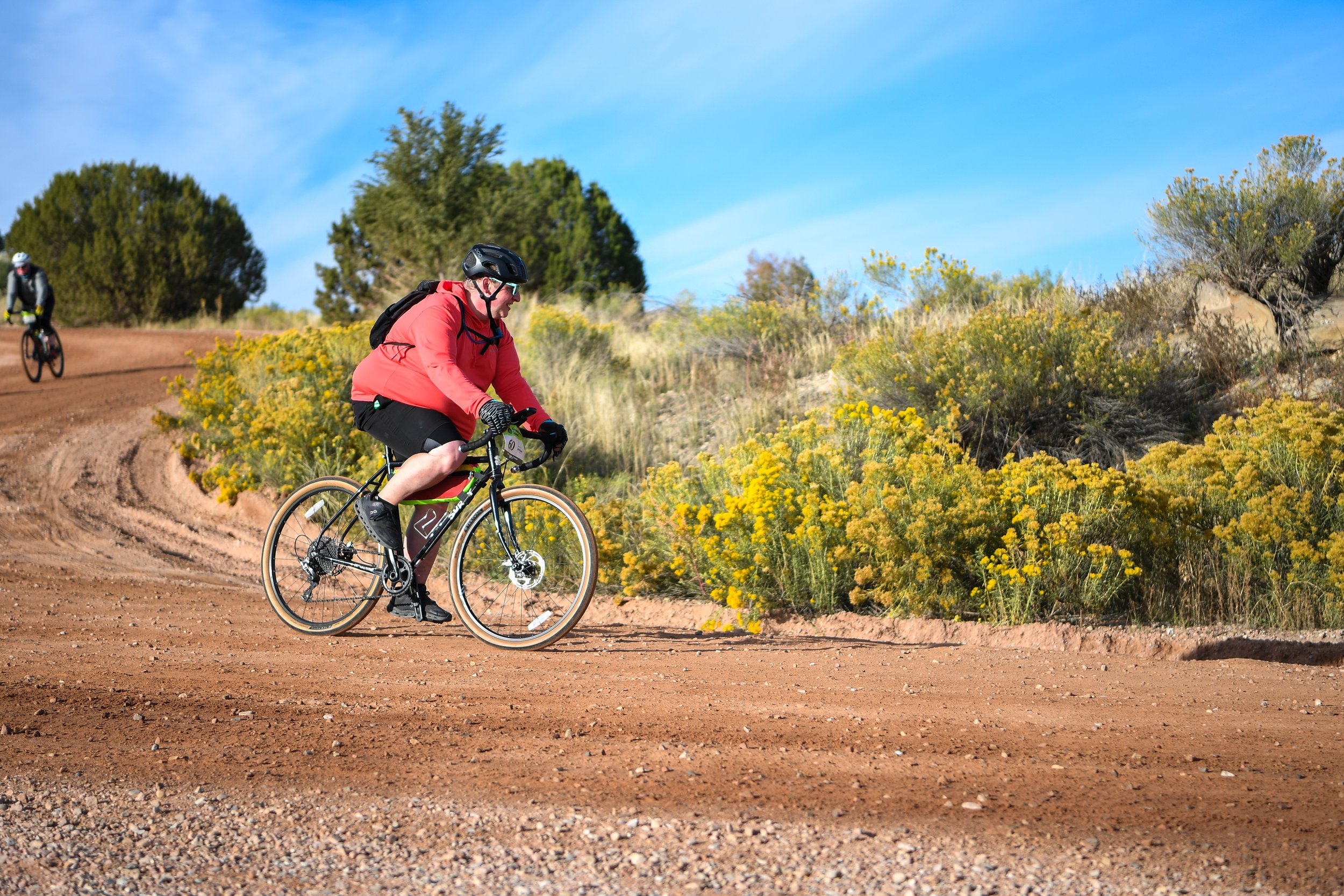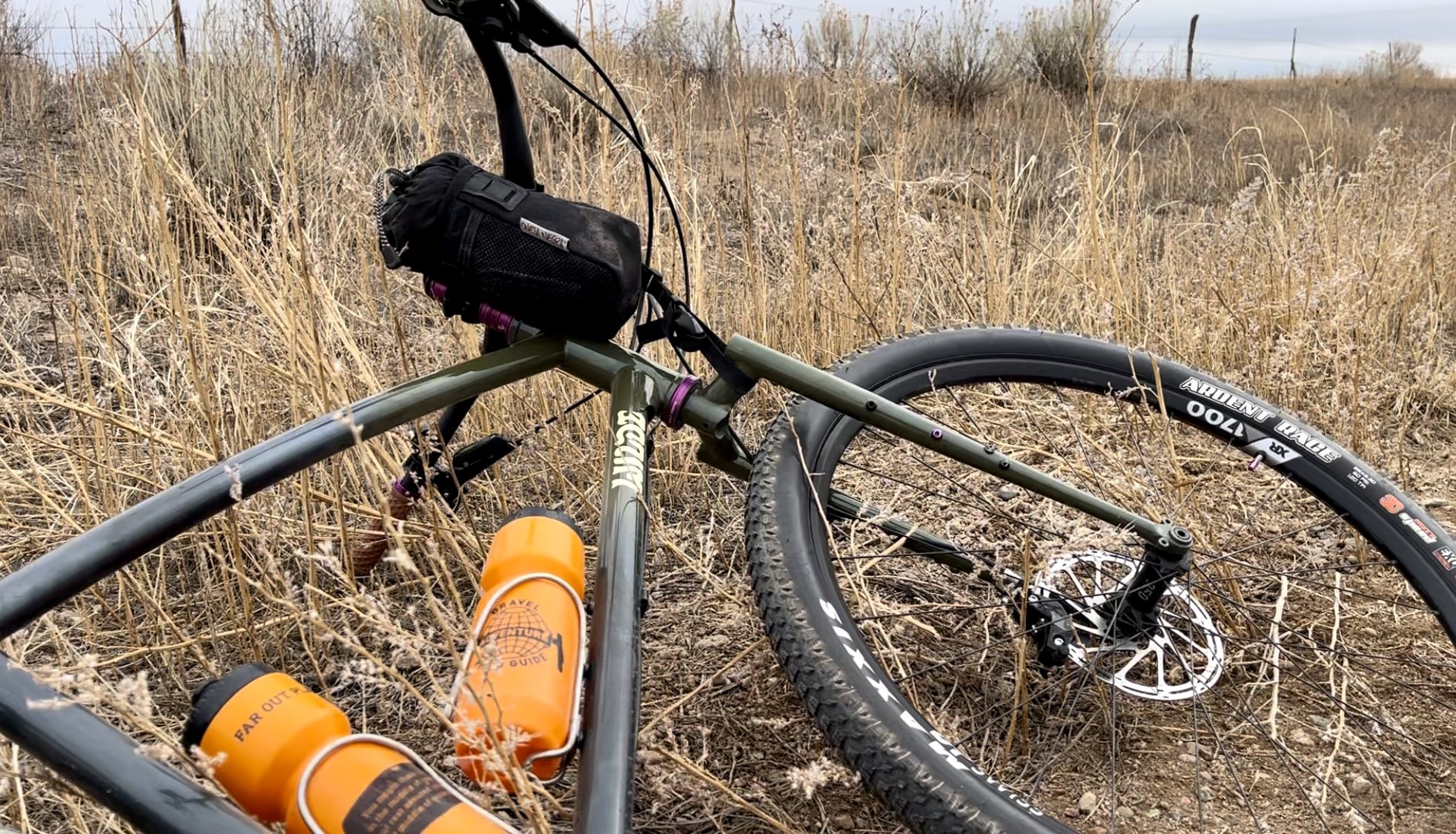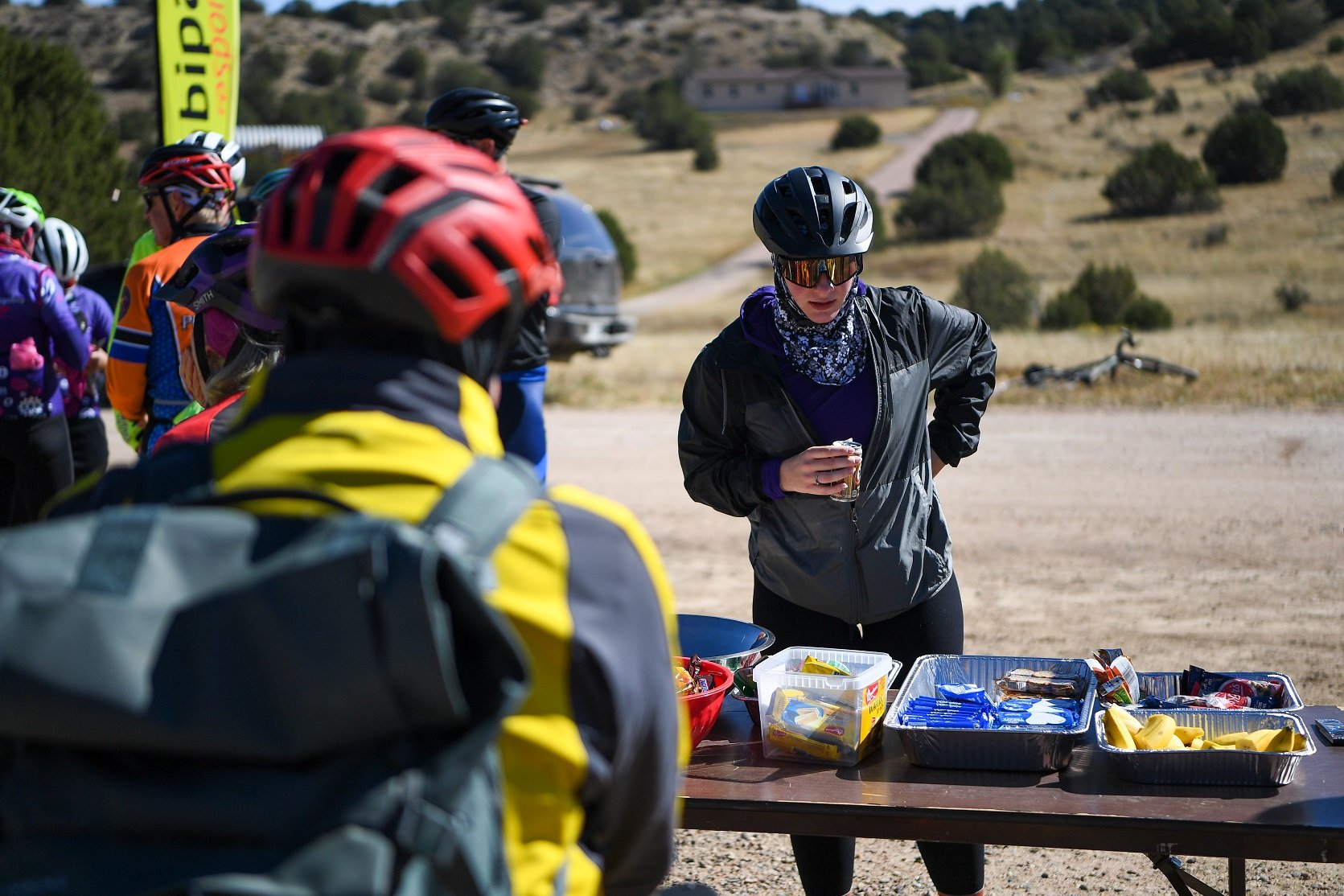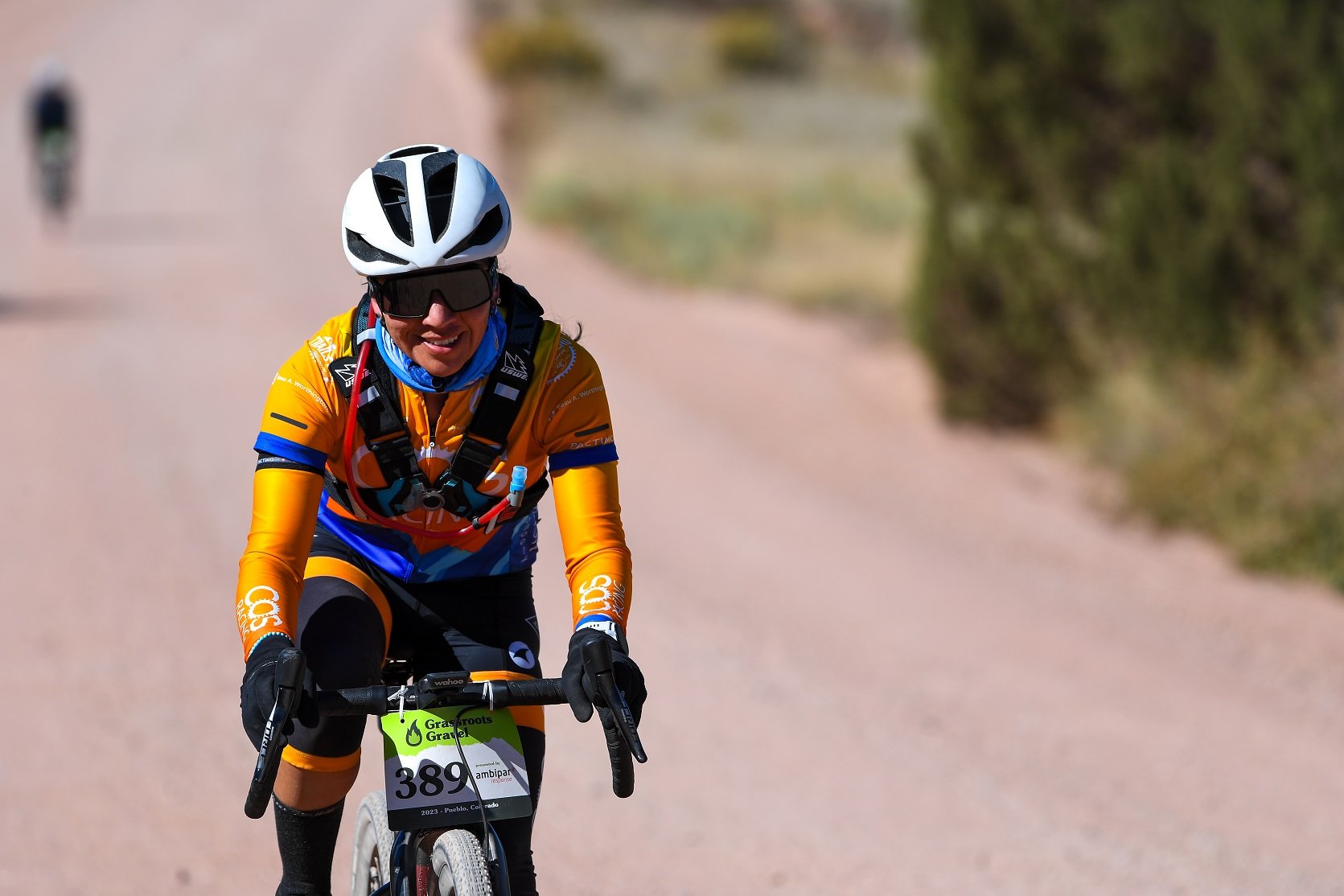
Fueling Your Ride
Hydration & nutrition basics
Unsure what and when should you eat and drink on your ride?
You’ll feel better and be able to do more when you’re fueled up. These suggestions can serve as a sort of baseline and simple guide to figuring out what works best for you. Needs vary…but it’s important to fuel and hydrate!
Note: this is not medical advice.
Water on your ride
Before the ride:
Drink a bottle of water (21-26 oz) in the 1-2 hours before you begin.
During the ride:
Drink at least one bottle of water (21-26 oz) per hour. For more intense sessions and temperatures, you’ll need to increase this.
After the ride:
Follow up your ride with additional fluids as well as electrolytes. You’ll need both for proper recovery and to avoid cramps.
Electrolytes…what’s the deal?
Don’t ignore these.
Water alone may not keep you performing on longer rides or in more extreme conditions. Based on current research, sodium is necessary for your body to properly stay hydrated during exercise or rehydrate following. More info here.
How can I get the electrolytes I need?
Simply put, have some salty snacks during your ride. Keeping it simple and getting some salt and other electrolytes in your system is better than ignoring electrolytes because you don’t have the “perfect” hydration mix. Salt is most important, based on current research(More info here). In the case that salty snacks are not be enough, you can supplement. There are a whole bunch of electrolyte options on the market, from salt pills, to electrolyte-replacement mixes, and all-in-one (including calories for fuel) mixes like FLOW’s endurance mix.
Calories on your ride
Before the ride:
Doing a ride that’s going to push your endurance? Eat more carbs the day before and the morning of. You don’t need to overeat, but you’ll want to emphasize carbohydrates rather than, say, protein. Pasta or potatoes over steak and cheese, for example.
During the ride:
You’re going to burn 400-600 calories per hour, and can only absorb about 300 calories per hour. Carbs like fructose and glucose are best. Set a timer and eat ~150 calories every ~45 minutes. Performance mixes like FLOW Endurance Mix simplify eating & drinking to one step. Remember: the important thing here is that you get your calories and hydration in, NOT that you do it “perfectly”.
After the ride:
If you can, follow-up your ride with a nutritious meal. Good food will help you recover more effectively.
Carrying everything
Do what is safe and works for you.
Make sure you can access your water & fuel (and not lose it). Water bottles and cages are tried & true. A hydration pack works well over rougher terrain. Stem, top tube, and frame bags are handy for storing solid food options and other items. There’s no “perfect” way to do this. Explore options with your current gear or gear you may want to try. Stay safe and build your skills to safely make use of whatever storage strategy you decide on.






